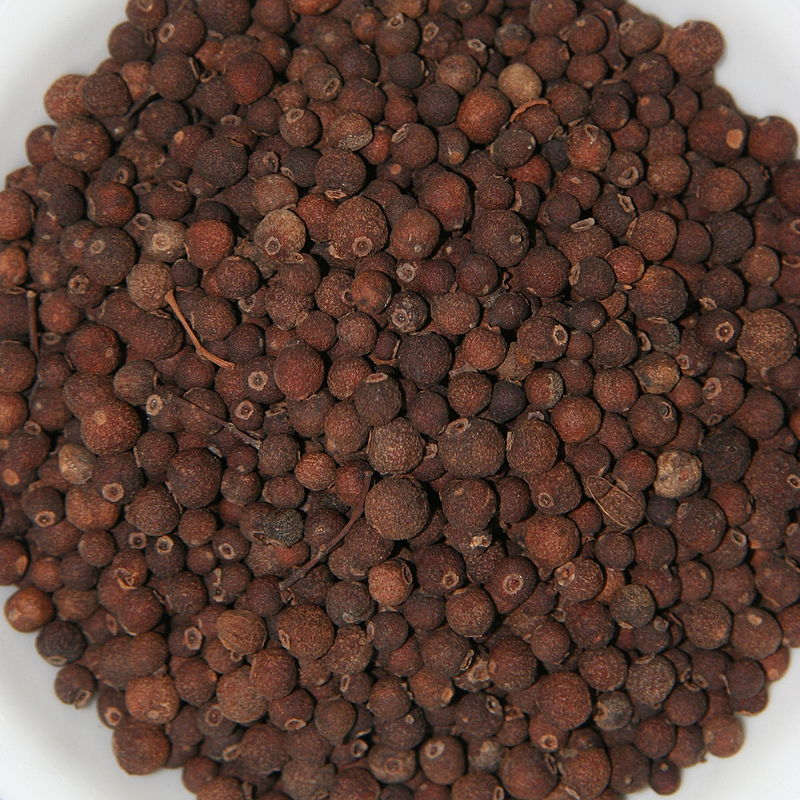
Allspice tree in a greenhouse
Allspice is made from the dried, unripened berries of the allspice tree (Pimenta dioica) which is native to the Caribbean, southern Mexico and Central America. It was called “allspice” by the English who thought that it tasted like a combination of cinnamon, nutmeg and cloves. It is an important ingredient in Jamaican Jerk seasoning. Its use has spread throughout the world and is now found in Middle Eastern cooking, as well as Great Britain, Germany and most famously, in Cincinnati-style chili in the US.
True to its tropical origins, the allspice tree is hardy only in zones 10 and 11. Mature trees can reach heights of 30 to 60 feet. They need full sun and are often grown to provide shade for coffee trees. Despite their large size, if properly pruned, they can be grown in containers like bay laurel trees.
Small white flowers appear in the spring followed by dark purple berries in the summer. The berries are harvested when they are green before they ripen to purple. Traditionally, they are dried in the sun. When dried, they are brown, resembling peppercorns. Once the dried berries are ground, they begin to lose their flavor so it is a good idea to buy allspice whole and grind it yourself only when you need it. The whole dried berries retain their flavor longer when they are whole than when they are ground.
The leaves of the allspice tree are also flavorful and used in Caribbean cuisine. Unlike bay leaves, they lose their flavor once they are dried so they are only used fresh.
In nature, the seeds of the allspice tree need to pass through the digestive system of birds before they will germinate, but you can fool the seeds and grow your own tree. Simply wait until the berries have ripened, then extract the 2 seeds inside each berry and soak the seeds in warm water for 24 hours. This will soften the hard seed coat.
Plant your seeds ¼-inch deep in a pot and place the pot on a heat mat which is set at 70⁰F to 80⁰F. Keep the soil moist. Germination could occur as soon as 2 weeks but could also take up to 3 months. You will need patience. If you are fortunate to live in zone 10 or 11, you can transplant your seedling into your garden in the fall. Again, you will need patience because it will be several years before your trees will begin to flower and produce berries.
The rest of us in colder climes will need to grow our allspice trees in containers, bringing them indoors when night time temps drop below 60⁰F. You can bring your tree outdoors in the spring when night time temperatures are above 60F. You need to be vigilant while your tree is indoors. Keep its container well-watered. Allspice trees do not tolerate any dryness.

